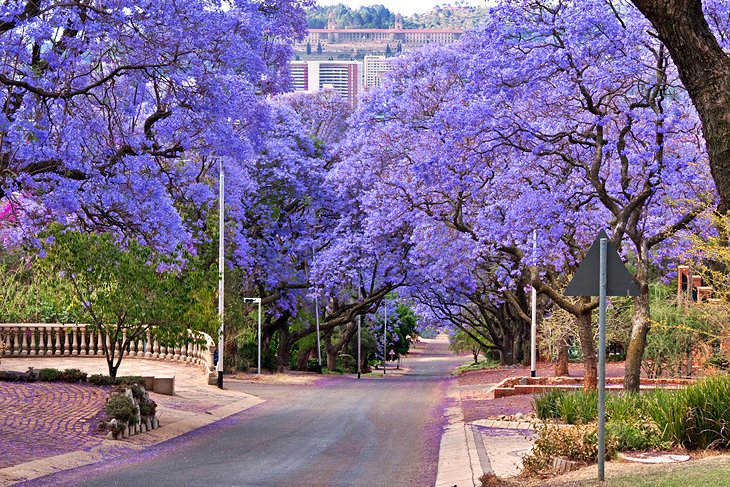The Ultimate Guide To Johannesburg North Attractions
The Ultimate Guide To Johannesburg North Attractions
Blog Article
The Buzz on Johannesburg North Attractions
Table of ContentsThe Basic Principles Of Johannesburg North Attractions All About Johannesburg North AttractionsThe smart Trick of Johannesburg North Attractions That Nobody is Talking AboutThe 8-Minute Rule for Johannesburg North AttractionsThe Ultimate Guide To Johannesburg North AttractionsFascination About Johannesburg North Attractions
The city owes its area to the existence of a much more precious source: gold. The city expanded on the side of the Witwatersrand Key Reef, a subterranean stratum of gold-bearing quartz-silica conglomerate that arcs for numerous miles below the Highveld. Most of the gold mines in the city ceased procedure in the 1970s, however in its day the Witwatersrand gold market made up more than 40 percent of the globe's yearly gold manufacturing.Johannesburg has a warm climate. Summer season temperature levels balance concerning 75 F (24 C); winter months temperature levels balance concerning 55 F (13 C) and only periodically dip listed below freezing. The city takes pleasure in regarding 8 hours of sunshine daily in both winter months and summer. Rain standards about 28 inches (700 millimetres) per year, yet the total varies significantly from year to year.
What rain the city obtains drops virtually solely in the summer months, frequently in spectacular late-afternoon electric storms., where lots of residents still rely on coal for gas.

The smart Trick of Johannesburg North Attractions That Nobody is Discussing
The equilibrium of the city is occupied by whites. Lodging differs in character and top quality. Soweto is well-known for its unlimited rows of municipally constructed, two-room matchbox homes, yet it likewise has a few thriving territories in addition to bursting squatter camps, where 10s of thousands live without water, electricity, or hygiene facilities.
Physical development, although rather restricted by transportation, continued swiftly as immigration to South Africa, and Johannesburg particularly, enhanced substantially. This problem was addressed in the 1930s when the auto was presented in mass production to South Africa. Autos were, for the most part, restricted to the rich, and allowed them to move to the north of the city and commute right into the centre.
The majority of poor suburban areas were blended, with poor blacks and whites living with each other, although the well-off suburban areas were normally booked for whites.
The previous system of eleven phoned number regions was reorganised in 2006. Marshalltown, as seen from the top of the Carlton Centre. The M1 and M2 run behind the structures, and the southerly suburbs extend past the freeway border. The internal city of Johannesburg lies within the city's Region F. The number of people living in the inner city on an informal basis is unknown, as numerous are illegal immigrants. The unemployment, education, and age profiles of the location are all unidentified, due to the problem of obtaining trustworthy details about the location.
The 20-Second Trick For Johannesburg North Attractions
Centred on the CBD, the area includes the suburban areas of Yeoville, Bellevue, my response Troyeville, Jeppestown, and Berea to the east. To the west it infects Pageview (Johannesburg North attractions) and Fordsburg. There are little industrial parks to the south, such as City West-Denver and Benrose. Around go 800,000 travelers pass via the central city everyday, and it works as a local buying node for visitors from the southern residential areas. Yeoville and Bellevue have a mix of apartment and single property systems on tiny whole lots. The area lies on a hilly divide that ranges from eastern to west. One of the most noticeable geographical feature is Observatory Ridge, which is called for the huge observatory situated on it. The recreational areas are no more used, as a result of protection problems.

What Does Johannesburg North Attractions Mean?
R. Tambo International Airport Terminal). The eastern suburban areas are a few of the earliest areas of Johannesburg, there are large areas of Jewish and various other European backgrounds, the majority of the population is English talking. There are three fairway in addition to a variety of protected ridges with viewsites. There are several strong and up-market amusement and purchasing areas in the east such as the Eastgate Mall and the Greenstone see this site purchasing centre.
The area is primarily made up of old "matchbox" houses, or four-room houses developed by the government, that were constructed to supply cheap lodging for black employees during apartheid. Soweto is an abbreviation, standing for "South Western Townships". Street after road around is lined with matchboxes; nevertheless, there are a few smaller sized areas where prosperous Sowetans have developed residences that are more similar in stature with those in more affluent suburban areas.
Hostels are another noticeable physical attribute of Soweto. Initially built to house male migrant employees, many have been boosted as residences for pairs and households. The N1 Western Bypass skirts the eastern border of Soweto. The residential area was not traditionally allowed to create work centres within the area, so nearly all of its homeowners are travelers to other components of the city.
Johannesburg North Attractions Fundamentals Explained
The N1 Western Bypass connects the northern suburban areas with the north-western suburbs. The suburbs in the north suburban areas are generally official, with no considerable areas of informal real estate, or housing that does not have a long-term framework. Although this is a well established area, there is a fad of land usage change from domestic to business, particularly along main arterial roadways and around established nodes.
Roadways to the east and west are less well developed, as there are no highways travelling in that instructions. Towards the northern boundary of the city, the thickness of development lowers, leaving big areas of undeveloped land around Midrand.
9 Simple Techniques For Johannesburg North Attractions
, which is located on a hillside forgeting the inner city and Hillbrow.
Report this page